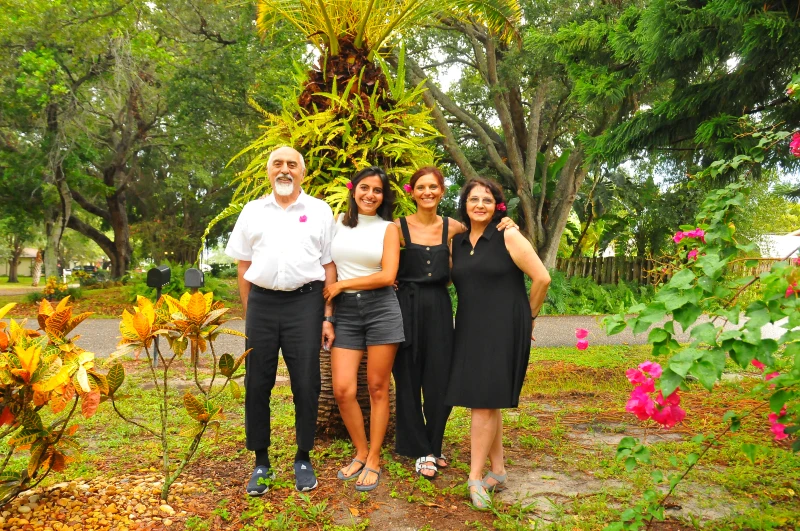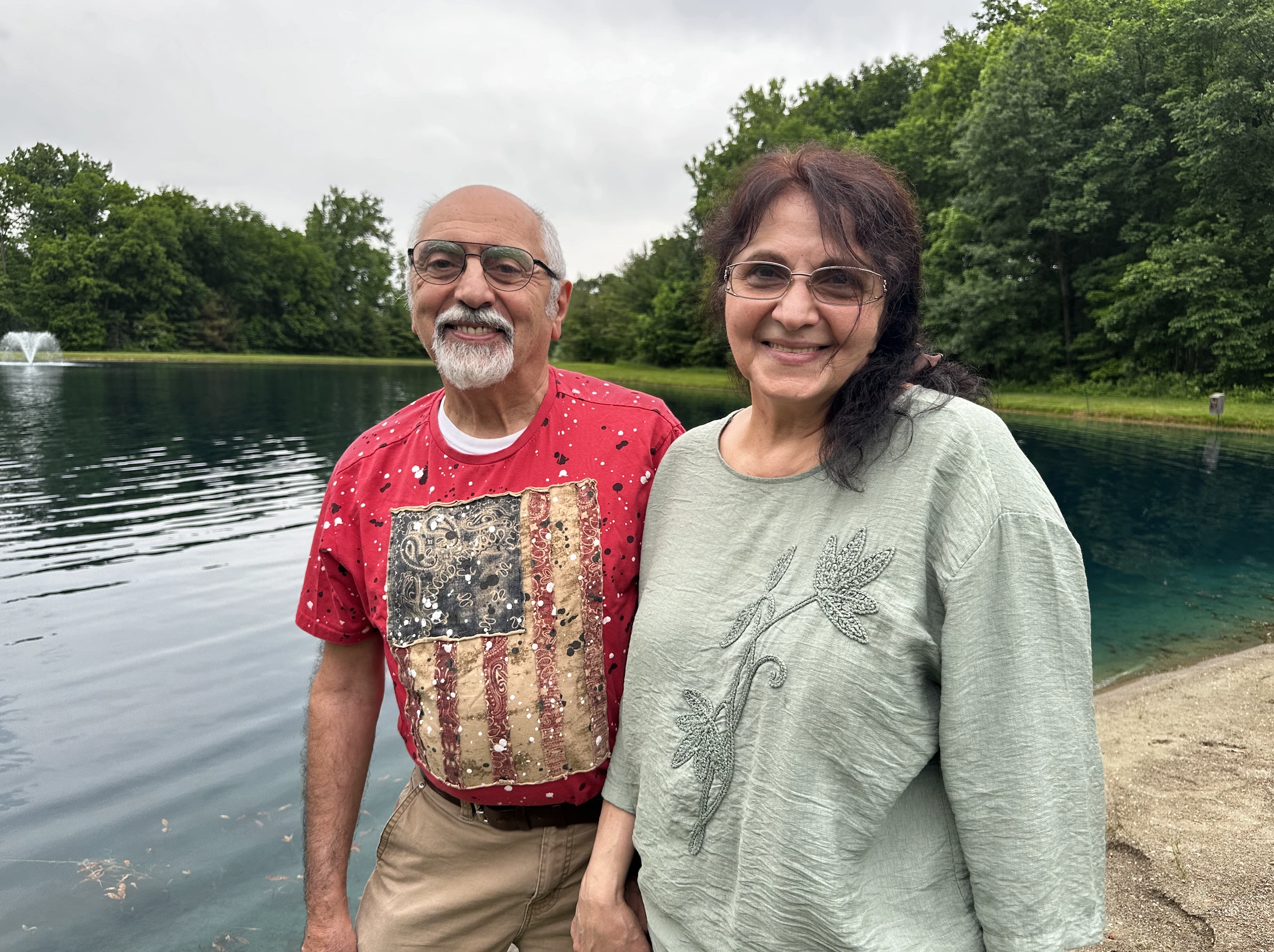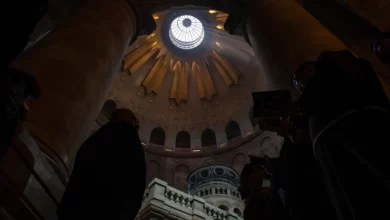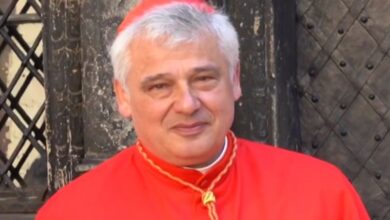Story of Armenian family’s journey to freedom, faith during genocide is focus of new film

 From left to right: Ivan, Olga, Julia, and Violetta Petrosyan. / Credit: Photo courtesy of the Petrosyan family
From left to right: Ivan, Olga, Julia, and Violetta Petrosyan. / Credit: Photo courtesy of the Petrosyan family CNA Staff, Jan 11, 2025 / 10:00 am (CNA).
A new movie telling the true story of an Armenian family who was forced to flee their home country of Azerbaijan amid political turmoil will be in theaters Jan. 26–28.
The Petrosyans — made up of husband and wife Ivan and Violetta and their two daughters Olga and Julia — inspired the new film “Between Borders,” which depicts the real-life events the family endured while fleeing their home in Baku, Azerbaijan, during the anti-Armenian massacre that took place in the late 1980s.
Experiencing discrimination in their home country and then in Russia, the country to which they fled, the Petrosyans eventually found hope in a church established by American missionaries. There they came to the faith and were helped to seek refuge in the United States.

CNA spoke to Violetta and Olga Petrosyan about their experience fleeing persecution and how they came to find refuge in Christ along the way.
Olga, who was only 4 years old when the violence broke out, said watching their story depicted in a movie has been “healing.”
“Growing up, when you end up going through all of those tribulations, you don’t know that there is a life not lived like this,” she explained. “You think that this is how everyone probably lived their life, but the older you get and the more normal your life becomes away from all the hardships, you understand how much you’ve gone through in your childhood and teenage years that affected you in many different traumatic ways.”
She pointed out that by watching their story now in a movie format with others who are “processing your story with you” it feels as though “you are seen and known and you are affirmed in some of those situations where you felt it wasn’t as bad — no, it was as bad because you can hear other people processing it out loud so it becomes healing.”
Violetta added that it was “a mix of emotions” watching their story on the big screen.
“It was so intense, so many emotions, bringing back memories — at the same time, in awe and wonder that God actually made it happen,” she said.
She explained that there are moments from your past “that you want to forget but you also don’t want to forget because there’s some aspect in life that still shows you how God brought you through, even at the moments when we didn’t know him. So, that’s how important it is that you understand that his hand was always protecting our family.”
While in Volgograd, Russia, after fleeing Azerbaijan, the family began to attend a church established by American missionaries and it was there that Violetta experienced a conversion.
She shared that she was taught by her grandmother at a young age to always make the sign of the cross and say the Lord’s Prayer before bed but her grandmother never spoke about God.

As she became an adult, Violetta became a member of the Communist Party and even led a Communist Party organization at the school she taught at.
“We were raised in the Communist era and we learned that there is no God, that God is evil. I would protect children from going to church because I said that it doesn’t exist,” she shared. “I still don’t know how I was saying that.”
“When God came into our life in Volgograd through the missionaries that was the immediate click and I realized that I’ve always known that God existed but I pushed him away from me and then it actually happened — my conversion happened on the 6th of October, on my physical birthday.”
Olga added: “I saw my family before Christ and then I saw my family after Christ and the difference that it makes to be united in Christ in the midst of hopelessness, around the circumstances, makes everything different. We still had the same tribulations after we came to Jesus, but we had this center, which was Christ binding us all together, that we knew that no matter what, we can do this with Christ who gives us strength.”
“It was Jesus that made the whole difference for me,” Olga said. “The world can give us temporary labels and I think we all carry some sort of labels that were given to us by people of this world. And I’ve carried those labels as a ‘foreigner,’ ‘unwanted,’ ‘refugee,’ ‘dirty,’ but I got one label from the Lord and that’s the one that will stick with me through eternity and that’s ‘child of God.’”
Olga hopes that “Between Borders” will help shed light not on the political conflict but on what hatred does to people.
“It’s not ‘Oh, look at what Azeris have done.’ I think for me it’s important, at least, that it’s more ‘Look what evil that is fostered, or hatred that is fostered, between two nationalities can do, what it can lead to,” she explained. “But at the same time, look what God can do despite and through that … There’s always hatred between two … and it’s fostered and it bursts more hatred and it bursts destruction and tragedy, but look what God can do.”
Violetta added that she hopes viewers will see that “there is always forgiveness.”
“No matter how hard the events were in that conflict … no matter how severe it is, love and forgiveness always conquer.”
Check theater listings near you for showtimes.
CNA’s video interview with Violetta and Olga Petrosyan can be watched below.






